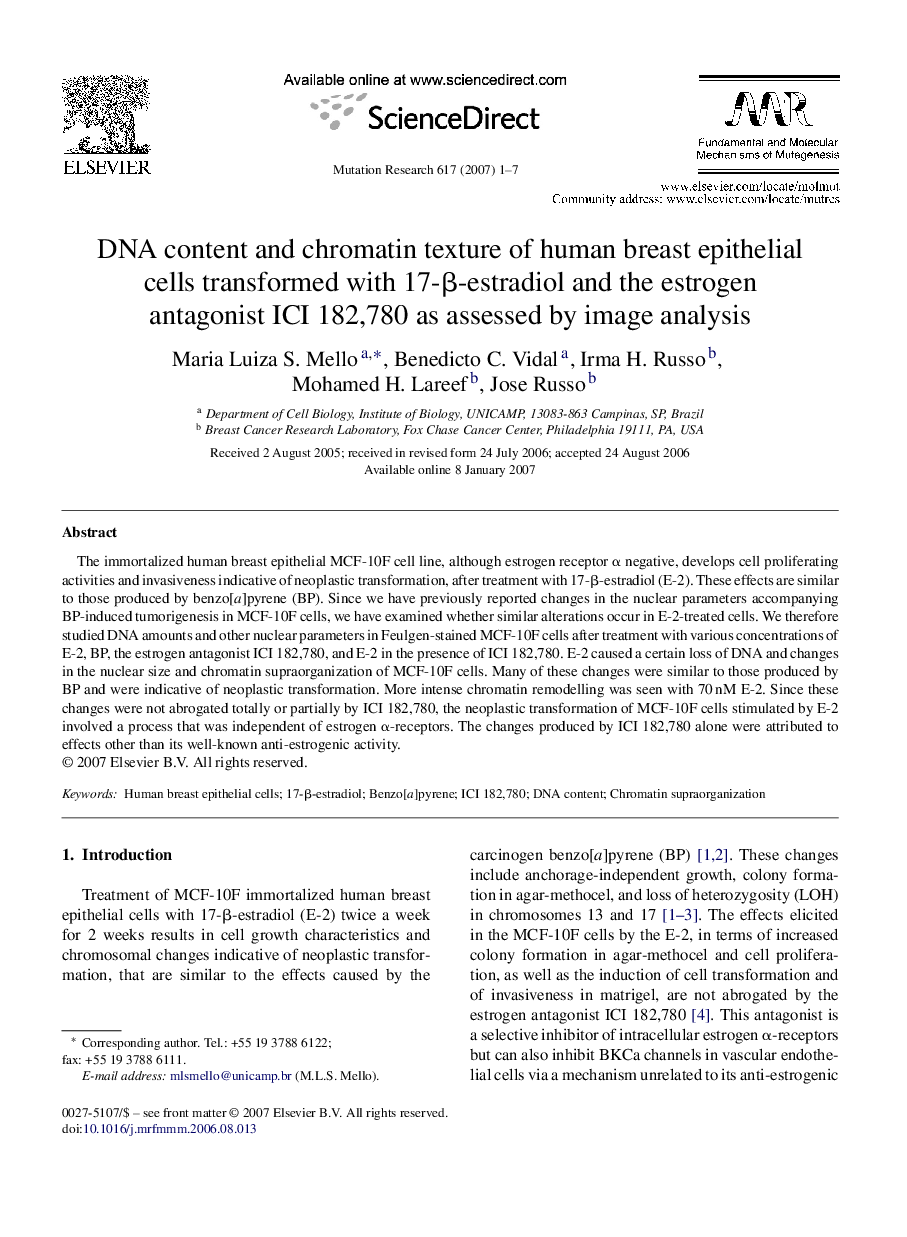| Article ID | Journal | Published Year | Pages | File Type |
|---|---|---|---|---|
| 2147488 | Mutation Research/Fundamental and Molecular Mechanisms of Mutagenesis | 2007 | 7 Pages |
Abstract
The immortalized human breast epithelial MCF-10F cell line, although estrogen receptor α negative, develops cell proliferating activities and invasiveness indicative of neoplastic transformation, after treatment with 17-β-estradiol (E-2). These effects are similar to those produced by benzo[a]pyrene (BP). Since we have previously reported changes in the nuclear parameters accompanying BP-induced tumorigenesis in MCF-10F cells, we have examined whether similar alterations occur in E-2-treated cells. We therefore studied DNA amounts and other nuclear parameters in Feulgen-stained MCF-10F cells after treatment with various concentrations of E-2, BP, the estrogen antagonist ICI 182,780, and E-2 in the presence of ICI 182,780. E-2 caused a certain loss of DNA and changes in the nuclear size and chromatin supraorganization of MCF-10F cells. Many of these changes were similar to those produced by BP and were indicative of neoplastic transformation. More intense chromatin remodelling was seen with 70 nM E-2. Since these changes were not abrogated totally or partially by ICI 182,780, the neoplastic transformation of MCF-10F cells stimulated by E-2 involved a process that was independent of estrogen α-receptors. The changes produced by ICI 182,780 alone were attributed to effects other than its well-known anti-estrogenic activity.
Related Topics
Life Sciences
Biochemistry, Genetics and Molecular Biology
Cancer Research
Authors
Maria Luiza S. Mello, Benedicto C. Vidal, Irma H. Russo, Mohamed H. Lareef, Jose Russo,
